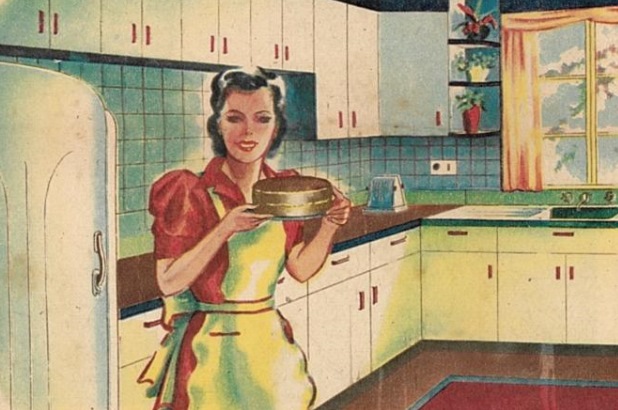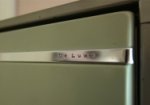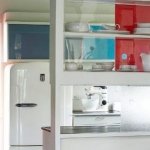I’ve been spending time at Meroogal lately as we wrestle with the collection stocktake. This magazine cutting certainly caught our attention!
Wife… or housewife?
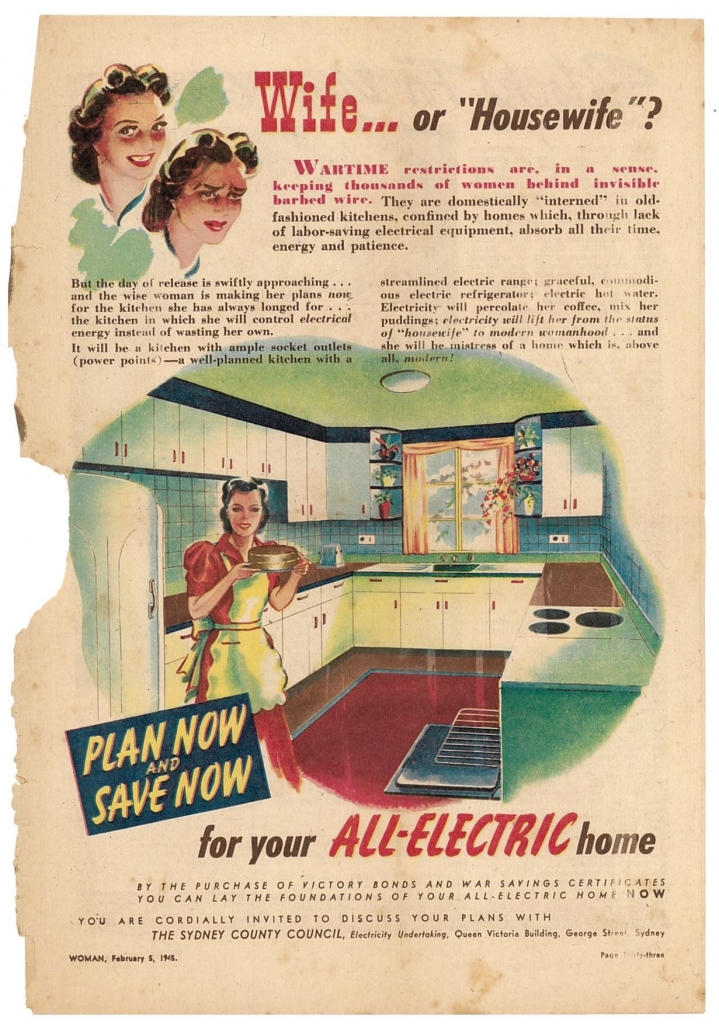
Wife or housewife? Advertisement from ‘Woman’ magazine, February 5th 1945. Meroogal collection, Sydney Living Museums.
We’ve talked before about the acquisition of 20th century appliances, culminating in the story of the electric refrigerator at Meroogal. That post came about from the last full stock-take, back in 2013, so today I’ve come full circle. Back then I wrote:
A collection like this is a bit of a perilous trap for a curator, and you can easily find yourself distracted for way too long. Like I did, following a literal paper trail and pretending all the while I was absorbed in accession codes…
At Meroogal the physical evidence of each generation is not just in furniture, textiles and artworks. It’s in the very obvious introduction to a late Victorian house of gas, piped water and electricity, and how these services were accommodated. Electricity cables are attached directly to ceilings, power points are in unusual positions and, my favourite, a bedside light in an upstairs bedroom is wired to a ceiling fitting.
Now with ample socket outlets!
This time it was an advertisement from 1945, alerting attentive homeowners to the revolution of a new electrified kitchen with its labour-saving appliances. Lets just get this bit out of the way first; the ad is totally cringeworthy to today’s reader. It starts by comparing a housewife, presumably using outmoded (gasp!) gas appliances with a prisoner-of-war about to be liberated:
Wife… or housewife?
Wartime restrictions are, in a sense, keeping thousands of women behind invisible barbed wire. They are domestically interned in old-fashioned kitchens, confined by homes which, through lack of labour saving electrical equipment, absorb all their time, energy and patience. But the day of release is swiftly approaching… and the wise woman is making her plans now for the kitchen she has always longed for… the kitchen in which she will control electrical energy instead of wasting her own.
It will be a kitchen with ample socket outlets (power points) – well-planned kitchen with a streamlined electrical range; graceful commodious electric refrigerator’ electric hot water’. Electricity will percolate her coffee; mix her for puddings; electricity will lift her from the status of housewife to modern womanhood and she will be mistress of a home which is, above all, modern!
(Hallelujah!)
In the all electric kitchen. Detail of advertisement from Woman magazine, February 5 1945. Meroogal collection, Sydney Living Museums
Somehow the cake has popped out of the oven (note the door is open) already in 2 layers – and already iced! That’s quite an appliance! No wonder she looks so happy. Three other highlights in the illustration are the toaster with its tilt-down sides (along with the fridge, cooking range and light the only electric appliances in view), the prominent “socket outlets (power points)”, and that the proud owner has taken off her ‘cooking’ apron and swapped it for a fancier ‘pinnie’ with a scalloped edge.
Its easy to just laugh at the text, which when I read it out loud as a test raised as many laughs as it did eyebrows, but the introduction of electricity – as so powerfully illustrated by Rose Seidler’s ultra-modern kitchen – was a kitchen revolution. It may not have freed the cook from the kitchen, but it would radically change the kitchen and domestic life for ever.
Housewives, start your savings!
But hang on, what’s this in the subtext? What were ‘war savings certificates’ and what are they to do with a new fridge, coffee percolators and toasters?
Plan now and save now for your all electric kitchen!
By the purchase of Victory bonds and War Savings certificates you can lay the foundations of your all-electric home now!
Remember when this ad appeared – for Australia, the surrender of Japan and the end of the Second World War was still nine months away. What this ad was actually doing was twofold: yes it encouraged readers to come in to the Sydney County Council offices, located in the Queen Victoria Building in the center of Sydney, to discuss their future home and modern kitchen, but it was doing so by encouraging people to patriotically invest in the war effort.
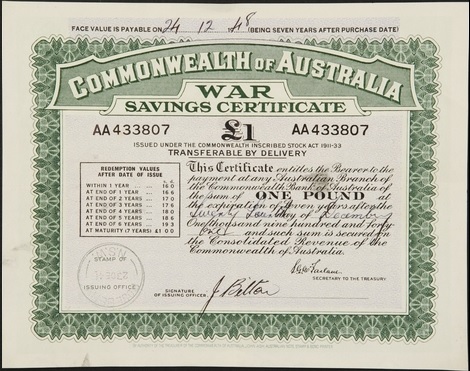
Commonwealth of Australia war savings certificate dated to be redeemed in 1948. Australian War Memorial collection
War certificates were issued by the Commonwealth Government of Australia (and also by other governments such as Great Britain, the USA, Ireland, Canada and so on); they were essentially bonds, to be redeemed a specified number of years after the purchase date for the initial sum plus the interest earned. The Australian War Memorial website records that in 1940 the Treasury –
…created a plan for raising money to pay for the war effort by encouraging Australians to “invest in victory” by purchasing war savings certificates. The issuing of these certificates enabled the government to borrow money from the Australian people. The loans supplemented the government’s war budget and their purpose was to reduce inflation by soaking up money unable to be spent on scarce consumer goods.
Certificates bought during the war were expected to mature from 16 shillings to £1 in seven years. By 1942 the sale of war savings certificates was a major source of revenue for the government. Australians were encouraged to invest during victory loan drives.
So what this ad is doing is getting its readers excited about a new electric labour-saving kitchen that they can have when the war is over and frugality is ended, by investing patriotically. As it says, Plan Now! and Save Now!
All-electric footnotes!
According to Wikipedia, “Woman magazine, or Woman: Incorporating the Woman’s Budget was a woman’s magazine published in Sydney, Australia, [published] by Sungravure. It operated from 1934 to 1954. Issues originally cost three pence each.”
